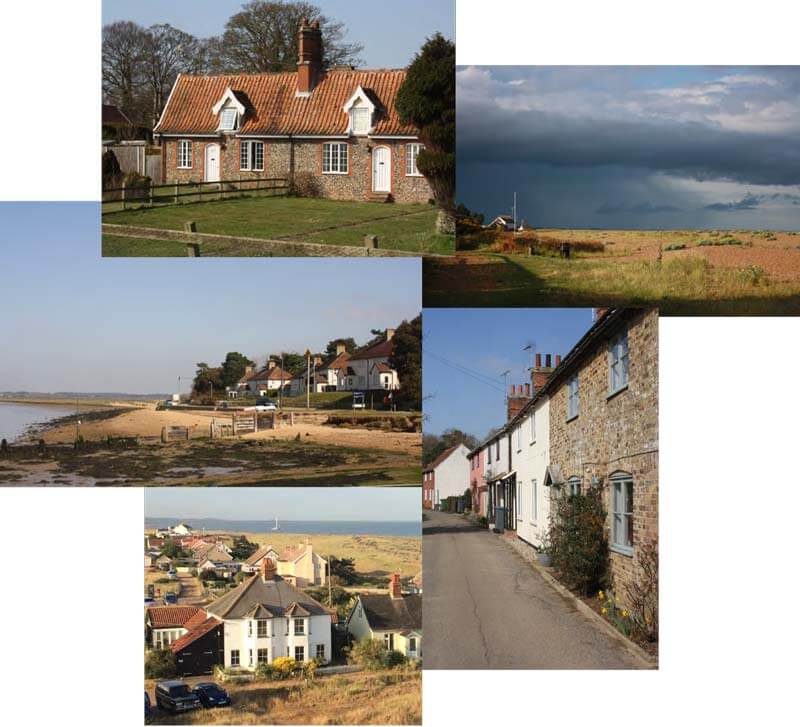Bawdsey
Bawdsey was originally an estate village and the majority of the old cottages were built by the Quilter family in the late 19th and early 20th century as model cottages for their workers.
The main street winds its way down to Bawdsey Quay with a tiny, sandy beach revealed at low tide and with access across the mouth of the River Deben to the hamlet of Felixstowe Ferry via the foot ferry.
Bawdsey is home to Bawdsey Manor, notable as the place where radar research took place early in World War II. It also boasts defences constructed around East Lane including a number of pillboxes.
The Radar Museum is set in one of the old transmitter blocks within the Manor grounds.
Bawdsey Cliff is a Site of Special Scientific Interest. It is 58 acres in size and provides more than a mile of exposed Gelasian Red Crag, the most significant exposure of Red Crag in England.
The oldest building in the village is the parish church of St Mary’s the Virgin which has a memorial to Edith Cavell whose family at one time lived in Bawdsey Hall.
There is also a thriving primary school in Bawdsey.
Shingle Street, a tiny seaside hamlet, (although geographically closer to Hollesley ) is in the civil parish of Bawdsey. The shingle beach runs from the Martello Tower X at East Lane to Martello Tower AA at Shingle Street and is another Site of Special Scientific Interest (SSSI).
In the 19th Century, Shingle Street was a fishing hamlet and home for Trinity House pilots who navigated the sailing barges through the treacherous mouth of the river Ore/Alde.
Coastguard cottages were built in 1880 to house the men of the service and their families.

